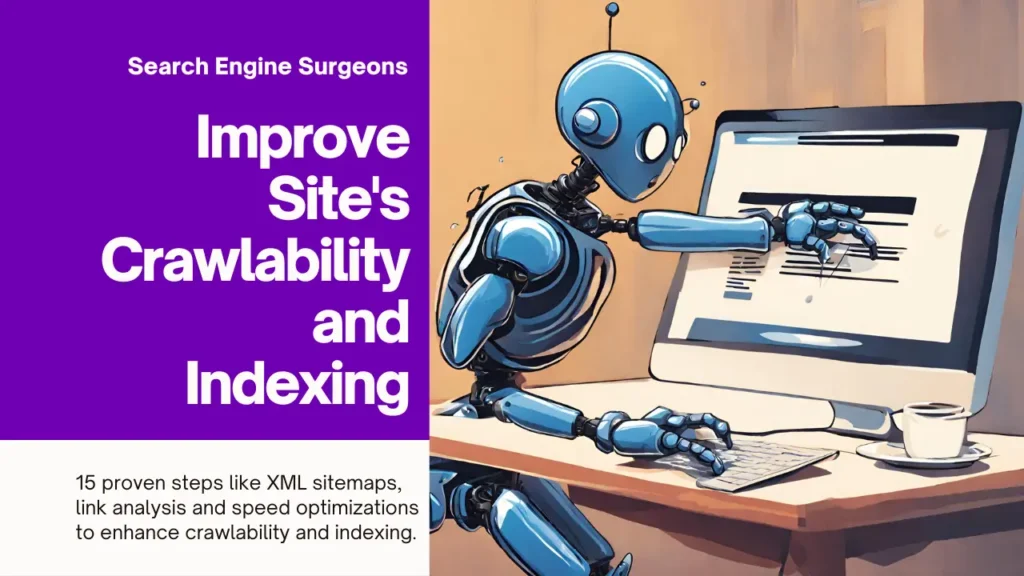Have you ever wondered why your website suddenly started ranking lower in search results or even got hit with a manual action? The culprit may be toxic links or problematic linking patterns that search engines see as suspicious. Toxic links can seriously damage your site’s search visibility and user experience if not addressed.
Links are the “votes” that determine a site’s authority and relevance in search algorithms. But some links are more equal than others. Search engines don’t just count links – they analyze the types of sites linking to you and how natural those links appear. Toxic links from low-quality or unnatural sources can trigger manual actions like a spam penalty.
Manual actions are never fun to deal with. They require taking time to investigate the underlying issues, form an appeal, and work with search engine reps. All the while, your site sits in search engine purgatory.
In this article, I’ll explain:
- Common sources of toxic links websites often encounter
- How to identify problematic links currently pointing to your site
- Specific tactics to remove, replace or disavow toxic links
- Best practices for building quality links to avoid issues in the future
By the end, you’ll have a better understanding of how to fix toxicity issues, prevent manual actions, and get your site back in search engine good graces.
Table of Contents
Understanding the Root Causes
You publish a new blog post and it gets zero traffic. Or you launch a new page on your site and it never seems to rank. Frustrating, right?
More often than not, issues like these are signs of underlying technical problems that search engines don’t like. Some common culprits include:
Outdated or Broken Content
Old, incomplete pages left to collect cobwebs send the wrong signals. Search engines want to see that sites are actively maintained. One study found that 66.5% of links Google analyzed pointed to pages that no longer existed! Oops.
Duplicate Content Woes
Copying content across multiple pages of a site is a big no-no. While it may seem like a way to rank for more keywords, search engines see this as an attempt to manipulate rankings. They’ll either pick one page to show or possibly apply a manual action.
Disjointed Internal Linking
If the navigation and internal linking structure on a site is a mess, search engines may not be able to properly crawl and understand the site architecture and content. A lack of internal linking can also make a site appear shallow.
Overly Aggressive Link Building
While links are important for SEO, suspicious linking patterns will raise red flags. This includes mass-produced link wheels, unnatural looking private blog networks, and other shady tactics.
The good news is all of these issues can be fixed with some audit work and strategic improvements. Stay tuned for tips on how to do just that!
Identifying the problematic links and actions
Now that we understand common causes, it’s time to start detecting problematic links and manual actions holding your site back.
The first step is to audit your link profile and search for suspicious patterns. Google Search Console is incredibly helpful here.
In Search Console, go to the “Links” section. Here you can:
- See all domains linking to your site. Any spammy or low-quality domains should be investigated.
- Filter links by anchor text. Unnatural patterns like “buy viagra” may indicate toxic links.
- Check for manual actions under “Manual Actions”. Details on fixes will be provided.
For a more in-depth link audit, tools like Ahrefs, Majestic, and SEMrush allow you to:
- Analyze linking root domains for quality, relevance and spam signals.
- Find pages on your site receiving toxic links to prioritize cleanup.
- Uncover private blog networks or unnatural looking link profiles.
You can also check server log files to find 404 and redirect issues. Any page returning 404 errors is a candidate for cleanup or redirection.
It’s also worth searching your site on Google and Bing looking for:
- Duplicate or low-quality pages
- Broken internal links
- Outdated or irrelevant pages
With diligence, these detection methods will shine a light on the links and issues sabotaging your SEO!
Fixing Toxic Links
Now that the problematic links have been found, it’s time to get rid of that link poison! Here are some effective remedies:
Remove Broken or Duplicate Pages
If pages are completely outdated or duplicated, removal is the best fix. Just be sure to set up 301 redirects so links still pass value.
Redirect Old Content to New
Rather than a 404, redirecting outdated pages to updated replacement content is preferable. This passes link equity while removing stale information.
Disavow Toxic Links
For unremovable toxic links from spammy sites, use Google Search Console or Bing Webmaster Tools to disavow links. This tells search engines to ignore those links without needing removal.
Replace Low-Quality Anchors
If many links point to your site with unnatural anchor text, contact those sites and request they update to more natural anchors matching your content.
Build New Quality Links
To counteract toxicity, focus link-building efforts on obtaining links from authoritative, relevant sources with natural anchors. This improves your profile over time.
Remove Private Blog Networks
Any unnatural looking private blog networks or link schemes need to be broken apart. Disavow the links and remove involved pages.
With persistence, these tactics will help reverse link damage by removing toxicity while strengthening your site’s authority. Just be patient – it can take time for search engines to recognize improvements.
Addressing Manual Actions
Despite your best efforts, manual actions like a spam penalty can still happen. But don’t panic – there is a process to remedy the situation.
The first step is to log into Google Search Console and carefully review the manual action notification. It will specify the type of action (e.g. unnatural links) and provide guidelines on fixes required.
For spam or unnatural links issues, the remedies are usually:
- Identify and disavow the toxic links as discussed earlier
- Clean up duplicate, low-quality content to remove spam signals
- Build some high-quality natural links to demonstrate positive change
You’ll also need to request a review once the fixes are complete. In the manual action report, click “Request Review” and explain what you’ve done.
It may take Google several weeks to process reviews during busy periods. Be patient and avoid repeated requests. As long as your site now looks natural, the penalty will likely be lifted.
For more severe actions, you may need to fill out Google’s formal reconsideration request form explaining the issue and changes made. They will investigate and reply regarding your status.
With communication and sincere effort, manual penalties can almost always be resolved over time. Just remain calm, learn from mistakes, and keep improving your site’s technical health and quality.
Preventing Future Issues
Cleaning up issues once is tough enough – you don’t want to repeat the process all over again. Here are some best practices to help prevent future toxicity problems:
Continuous Link Auditing
Use tools regularly to monitor your link profile for new toxic links. Catch problems early before they cause damage.
Responsible Link Building
When obtaining new links, ensure they come from authoritative sources with natural-looking anchor text. Avoid questionable tactics that could burn you later.
Ongoing Content Production
By continuously creating fresh, valuable content, your site looks actively-maintained. This shows search engines you care about quality and users.
Site Speed Optimizations
Google is increasingly favoring faster sites. Keep page speed healthy through image optimization, caching, and other techniques.
404 Page for Broken Links
Rather than a generic 404, have a customized 404 page explaining to search engines and users why certain pages are unavailable.
Internal Link Integrity Checks
Regularly crawl your site to check all internal links are functioning properly. Fix any broken links to avoid confusing search engines.
Outdated Content Removal
Have a process to periodically archive, update or remove outdated pages before they start to hurt your site’s reputation.
Staying proactive like this helps search engines continue seeing your site positively so toxicity never resurfaces again. Your rankings will thank you!
Conclusion
We’ve covered a lot in this post – from understanding the root causes of toxic links and manual actions, to detecting issues, fixing problems, battling penalties, and preventing future toxicity. With diligence, your site’s reputation with search engines can be salvaged and strengthened.
The takeaways are:
- Toxic links damage your SEO and user experience if not addressed properly. But with the right techniques, their impact can be mitigated or reversed over time.
- Thoroughly auditing your link profile using tools like Google Search Console is key to finding problematic links early before serious effects occur.
- Having a process to continuously monitor links, build quality links responsibly, and remove outdated content helps search engines keep seeing your site positively.
- If manual actions do happen, carefully follow guidelines to demonstrate meaningful changes through content/link cleanup and communication with Google. With patience, penalties can almost always be lifted.
By making toxic link cleanup and prevention part of your ongoing optimization efforts, your site’s search performance and authority will thank you. Most importantly, users will have a better experience on a site … … maintained with their interests in mind.
Thank you for reading! I hope you found this post helpful. Please feel free to reach out if you have any other SEO questions.





